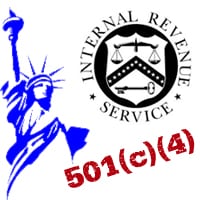When social impact entrepreneurs think about establishing a charitable organization to further their mission, their initial impulse is often to create a 501(c)(3) tax-exempt entity.1 However, it is crucial to understand the key differences between the three main classifications of 501(c)(3) organizations: public charities, private non-operating foundations, and private operating foundations. An organization’s most appropriate tax-exempt status depends on its specific goals, activities, and ability to meet particular criteria. This article will provide a comparative overview of these three classifications, assisting social entrepreneurs in making an informed decision about the best fit for their vision and impact strategy.
Public Charity vs. Private Foundation
Every organization classified under section 501(c)(3) is categorized as either a private foundation or a public charity. The main distinction between the two lies in the level of public involvement in their activities.
Public charities typically receive a larger portion of their funding from the general public or government entities and engage more actively with the community. In contrast, a private foundation is usually overseen by family members or a small group of individuals, relying heavily on limited funding sources and investment income. Due to their lower level of public transparency, private foundations are subject to various operational restrictions and may incur excise taxes if they do not comply with these regulations.
Under tax law, an organization categorized under section 501(c)(3) is generally assumed to be a private foundation unless it formally requests and obtains a ruling to be recognized as a public charity. Organizations that qualify as public charities include schools, hospitals, churches, publicly supported organizations (which receive a specified portion of their total support from public sources), and certain supporting organizations. Churches, along with their integrated auxiliaries and conventions or associations, that fulfill the requirements of section 501(c)(3) of the Internal Revenue Code are automatically recognized as tax-exempt and do not need to apply for or obtain recognition of their exempt status from the IRS.
Private foundations are categorized into two types: private non-operating foundations and private operating foundations, which are discussed and distinguished further below.
Public Charity
Public charities hold the most advantages among the three primary types of 501(c)(3) organizations. This is why many organizations aim to qualify as public charities to access the full benefits of this designation. These organizations typically engage in direct service or other tax-exempt activities but can also participate in grant-making initiatives. Their funding is obtained from diverse sources, including individual donations, government contributions, and private foundations.
An organization must meet one of three “public support” tests to obtain and maintain public charity status. The IRS considers an organization to have met the “public support” test if it satisfies either the (1) one-third (1/3) support test or the (2) ten percent (10%) facts and circumstances test.
One-Third Public Support Tests
To meet one of the two “one-third public support tests,” an organization must fulfill one of the following criteria:
- It must receive at least one-third of its support through contributions from other public charities, governmental agencies, and/or the general public.
- Alternatively, it can receive no more than one-third of its support from gross investment income while obtaining more than one-third of its support from contributions, membership fees, and gross receipts from tax-exempt activities.
It is important to note that any grant or contribution received from sources other than governmental entities or another public charity—provided that they meet the “one-third” test—counts as public support only up to a limit of 2% of the total support received over a five-year assessment period.
For example, if an organization receives a total support of $100,000 over five years and obtains a grant of $40,000 from a private foundation, the entire $40,000 will count towards total support. However, only $2,000 (which is 2% of $100,000) of that grant will be counted as public support.
This limitation can create what is known as a “tipping” problem. A large contribution from a private foundation or an individual is capped at the 2% limit, which can increase the overall total support figure without a corresponding increase in the public support amount. As a result, this may lead the organization to fail the “one-third” test.
Ten-Percent Facts and Circumstances Test
If an organization cannot demonstrate that it is likely to meet the one-third support test, it can still qualify as a public charity by meeting the following criteria: (1) at least ten percent (10%) of its total support must come from a variety of public sources, (2) there must be widespread public interest in its programs, (3) it should have a continuous fundraising program aimed at reaching a diverse segment of the public, and (4) its board of directors must represent public interests effectively.
Advantages of Public Charity Status
Higher Tax-Deductibility Limits
One of the biggest advantages of being a public charity is that donors can deduct cash contributions in full up to 60% of their adjusted gross income. This advantage means that individual donors have a greater tax benefit from contributing to public charities than private foundations (as further explained below).
Easier to Receive Grants from Private Non-Operating Foundations
Due to specific tax regulations, private foundations typically prefer to grant funds to public charities instead of other private foundations. As a result, if your organization is set up as a public charity, it is likely to receive more grants from private foundations compared to being structured as a private foundation.
Not Subject to Stricter Regulations Applicable to Private Foundations
Public charities have several advantages over private foundations, primarily because they are exempt from many of the stringent requirements that private foundations face. For example, public charities are not required to spend a specific minimum amount of their funds each year, known as “qualifying distributions,” which is mandatory for private foundations. However, in practice, most public charities tend to spend more than the minimum required to support their charitable activities. Public charities are not subject to the strict self-dealing rules that apply to private foundations; they do not have to pay a tax on their net investment income.
Ability to Engage in Limited Lobbying Activities
Public charities may also engage in a certain limited number of lobbying activities, as compared to private foundations and private operating foundations, which are completely prohibited from engaging in any lobbying activities.2
Disadvantages of Public Charity Status
There are technically no disadvantages to public charity status, except for the requirement that the organization meet the IRS’s public support test. This means the organization needs to receive funding from a diverse range of sources. However, organizations that secure sufficient funding from limited sources—such as a small group of dedicated donors or an endowment—may not find it necessary or beneficial to focus on continuous fundraising efforts. Consequently, public charity status might not be the best tax-exempt option for organizations that prefer to avoid ongoing fundraising activities.
Private Non-Operating Foundation
When an organization does not qualify as a public charity, the IRS automatically classifies it as a private non-operating foundation. Private foundations are usually funded by a small group of individuals, such as family members, or a single primary source, like a corporation. Most private non-operating foundations focus primarily on grantmaking to fulfill their charitable objectives and typically do not run their own charitable programs. However, it is important to note that non-operating foundations are not prohibited from conducting direct charitable activities if they choose to do so.
Advantages of Private Non-Operating Foundation Status
No Requirement to Fundraise
Private foundations do not need to ensure that they receive their funding from broad “public support.” This alleviates the administrative burden of making sure donations are not primarily from a limited number of donors.
Disadvantages of Private Non-Operating Foundation Status
Tax-Deductibility
Donors face a significant disadvantage in terms of tax deductibility when compared to public charities. Cash donations made to private foundations are only tax-deductible up to 30% of a donor’s adjusted gross income. As a result, many large donors tend to prefer donating to public charities instead.
Qualifying Distributions
The IRS mandates that private foundations adhere to several additional requirements that do not apply to public charities. One specific requirement is that private foundations must make “qualifying distributions” to eligible public charities or other tax-exempt organizations. These distributions must be equal to 5% of the average fair market value of their assets from the previous year.
Grantmaking Oversight
Private foundations that make grants to other private foundations, foreign organizations, or any entities that are not 501(c)(3) public charities must ensure proper oversight of these grants. This can be achieved through one of two methods:
- “Equivalency Determination” The foundation determines that the grantee organization is equivalent to a U.S. public charity.
- “Expenditure Responsibility” The foundation implements measures to ensure that the grant funds are used for charitable purposes.
The rules surrounding expenditure responsibility require detailed accounting and documentation to confirm that grants given to private foundations and other organizations not classified as public charities are spent appropriately—specifically, for charitable purposes rather than for private benefit or political gain. Due to these additional oversight requirements, private foundations may be discouraged from making grants to organizations that are not public charities. As a result, they typically concentrate their grantmaking efforts on supporting public charities.
Tax on Net Investment Income
Private foundations face additional taxes that public charities do not, including a 1.39% excise tax on their net investment income.
Prohibition on Self-Dealing Transactions
Private foundations are generally prohibited from engaging in financial transactions with insiders associated with the foundation. These transactions are referred to as “self-dealing transactions.” The following activities are typically considered self-dealing between a private foundation and a disqualified person:
- Sale, exchange, or leasing of property.
- Leasing agreements.
- Lending money or extending credit.
- Providing goods, services, or facilities.
- Paying compensation or reimbursing expenses to a disqualified person.
- Transferring foundation income or assets to, or for the benefit of, a disqualified person.
- Certain agreements to make payments of money or property to government officials.
The prohibition on self-dealing means that members of the foundation’s board and other disqualified persons, including significant contributors, are not allowed to personally benefit from any transactions that the foundation conducts. In contrast, public charities can engage in these types of transactions as long as the board determines that the transactions are in the charity’s best interest. The ban on self-dealing is quite extensive; even payments made to a disqualified person for goods or services rendered at or below fair market value are prohibited. Therefore, avoiding financial transactions between disqualified persons and the foundation is crucial.
Tax on Excess Business Holdings
Private foundations are subject to a tax on their excess business holdings. This tax effectively prohibits a foundation and its disqualified persons from owning more than 20% of the voting stock of a business enterprise in total.
Tax on Jeopardizing Investments
Private foundations are also subject to a punitive tax on certain risky investments, known as “jeopardizing investments.” Jeopardizing investments are those that generally show a lack of reasonable business care and prudence in providing for the foundation’s long- and short-term financial needs to carry out its exempt function. No single factor determines whether an investment should be deemed a jeopardizing investment; rather, the determination must be made on an investment-by-investment basis, taking into account the foundation’s portfolio as a whole. The foundation managers may consider expected returns, risks of rising and falling prices, and the need for diversification within the portfolio.
Private Operating Foundation
A private operating foundation is a special type of private foundation. It is typically established if an organization cannot achieve public charity status but can satisfy certain other criteria.
The primary distinction between private operating foundations and private non-operating foundations lies in their activities. Private operating foundations actively conduct their own charitable programs, whereas non-operating foundations do not. Because of this essential difference, private operating foundations must adhere to regulations similar to those governing public charities, which tend to be more favorable than those that apply to non-operating foundations.
Advantages of Private Operating Foundation Status
Grants from Private Non-Operating Foundations Count Towards the Grantor’s Qualifying Distributions
Private operating foundations are eligible to receive “qualifying distributions” from other private foundations in the same way that public charities are eligible to receive them for the conduct of their own charitable programs. This benefit makes it more likely that a private foundation would grant to a private operating foundation than to a private non-operating foundation.
Higher Tax-Deductibility than Contributions to Non-Operating Foundations
Private operating foundations are subject to the more generous donation deductibility limits applicable to public charities (whereas donations to non-operating foundations have lower deductibility limits). Because wealthier donors are sensitive to the deductibility cap, the more generous tax-deductibility limits available to private operating foundations is typically the primary motivation for founder-philanthropists to seek private operating foundation status over non-operating foundation status.
Cash contributions made to operating foundations are deductible for taxpayers up to 60% of their adjusted gross income (AGI), similar to the deduction limit for public charities. In contrast, for non-operating foundations, the limit is 30%.
Donations of long-term capital gain property—such as artwork or real estate—are also deductible when given to operating foundations, with a limit of 30% of the taxpayer’s AGI, akin to donations made to public charities. However, this deduction is limited to 20% of the donor’s AGI for non-operating foundations.
Additionally, the deduction for long-term capital gain property donated to an operating foundation is generally based on the property’s fair market value on the date of the contribution. Conversely, for non-operating foundations, the deduction for long-term capital gain property (excluding qualified appreciated stock) is limited to the donor’s tax basis in the property.
Disadvantages of Private Operating Foundation Status
Compliance with Strict Financial Tests
A private operating foundation must allocate most of its resources—either its earnings or assets—toward actively pursuing its tax-exempt activities. Specifically, it must spend at least 85 percent of its adjusted net income or its minimum investment return (whichever is less) directly on these exempt activities. This requirement is known as the income test.
In addition to passing the income test, the foundation must also meet one of the following tests: (1) the assets test, (2) the endowment test, or (3) the support test. Together, these tests constitute the qualifying distribution requirement for private operating foundations.
Private operating foundations must demonstrate compliance with these tests every year by providing information in the annual Form 990-PF filed with the IRS.
Restrictions applicable to non-operating foundations
Private operating foundations are also subject to taxes on self-dealing, excess business holdings, jeopardizing investments, and net investment income.
Conclusion
Choosing the right 501(c)(3) classification—whether as a public charity, a private non-operating foundation, or a private operating foundation—depends largely on the specific goals of the organization and its planned sources of funding. While it is relatively easy to switch from a public charity to a private non-operating foundation, it is a much more complex process to seek reclassification from a private foundation to a public charity. Therefore, it is crucial to understand the differences between these classifications in order to select the most suitable one for your goals from the start.
1 A 501(c)(3) refers to the federal tax code section granting tax-exempt status to certain organizations.
2 A narrow exception to the lobbying prohibition exists in connection with lobbying in “self-defense” on legislation that would affect the existence, powers, duties, or tax-exempt status of a private foundation or its ability to receive deductible contributions.
- Karen l. Wuhttps://perlmanandperlman.com/author/karenwu/
- Karen l. Wuhttps://perlmanandperlman.com/author/karenwu/
- Karen l. Wuhttps://perlmanandperlman.com/author/karenwu/
- Karen l. Wuhttps://perlmanandperlman.com/author/karenwu/













